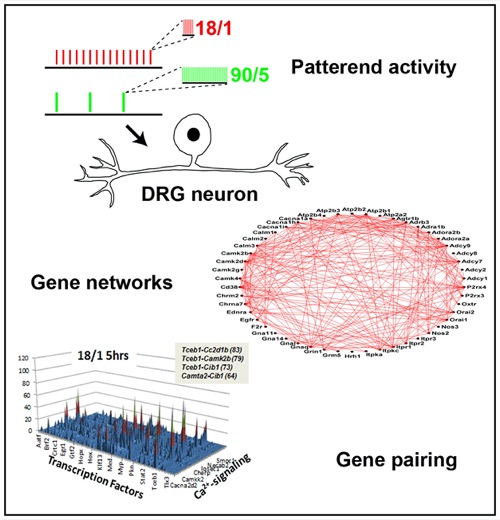Abstract
Transcriptional responses to the appropriate temporal pattern of action potential firing are essential for long-term adaption of neuronal properties to the functional activity of neural circuits and environmental experience. However, standard transcriptome analysis methods can be too limited in identifying critical aspects that coordinate temporal coding of action potential firing with transcriptome response. A Pearson correlation analysis was applied to determine how pairs of genes in the mouse dorsal root ganglion (DRG) neurons are coordinately expressed in response to stimulation producing the same number of action potentials by two different temporal patterns. Analysis of 4728 distinct gene-pairs related to calcium signaling, 435,711 pairs of transcription factors, 820 pairs of voltage-gated ion channels, and 86,862 pairs of calcium signaling genes with transcription factors indicated that genes become coordinately activated by distinct action potential firing patterns and this depends on the duration of stimulation. Moreover, a measure of expression variance revealed that the control of transcripts abundances is sensitive to the pattern of stimulation. Thus, action potentials impact intracellular signaling and the transcriptome in dynamic manner that not only alter gene expression levels significantly (as previously reported) but also affects the control of their expression fluctuations and profoundly remodel the transcriptional networks.
